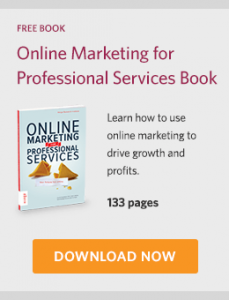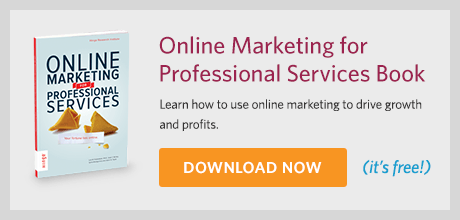Take it from those of us with the scars on our backs to prove it – AEC is one of the most competitive markets in professional services. Many firms hold true to traditional marketing techniques, such as PR, advertising, and referrals, as their primary marketing tactics.
However, with many professional services buyers shifting to the digital space, it’s important to consider what online tools are best suited to help implement and support online marketing efforts.
Here are six must-have tools for your firm to launch a successful online marketing strategy:
1. Web Analytics Tools
The foundation of measuring a successful online marketing strategy is web analytics. When you’re searching for a web analytics tool for your site, consider Google Analytics. Easily the most well known analytics program, it allows you to see when there are spikes or dips in your site’s inbound traffic, the engagement levels with web visitors, and which sections of your website are seeing more traffic. (Did I mention that its free)?
Web analytics can also help you see how many people download content from your site (such as an ebook or whitepaper) or the number of visitors who took time to fill out a form on your site (such as a Contact Us form). Google Analytics will also help you track referral traffic, so you’ll know where your traffic is coming from.
 2. Social Media Scheduling Tool
2. Social Media Scheduling Tool
Timing is everything, especially in social media. Whether your firm is sharing content on LinkedIn, Twitter, or Facebook, you’ll want to keep consistent profiles and update channels when people will most likely see it.
Did you know that 60% of buyers of professional services check out a brand’s social media channels before buying. Would you want to risk 60% of potential buyers looking elsewhere because you have a weak social media presence?
Social media scheduling tools, like Hootsuite and Social Mention, allow you to monitor all of your social media channels from one online dashboard and schedule your postings. The time it may take you to get this online marketing tool in place will be canceled out by the time saved when you can manage all of your social media channels in one location.
3. Brand Mention Tools
Who’s mentioning you online? To find out, consider brand mention tools like Google Alerts or Mention. They are free or low-cost and will keep you aware of brand mentions across the web.
These online mention tools handles the research for you. Just set up the keywords you want them to keep an eye out for, and you’ll be notified via email when they are mentioned online. Expect to see content like blog posts, articles, reviews, quotes, or any other type of content where your firm name (or other keyword) is mentioned.
Using these tools will help your firm gauge your online footprint, connect with potential content or business partners, and monitor inbound links.
SEE ALSO: 6 Ways to Measure Marketing Success in Architecture Marketing
4. LinkedIn
While LinkedIn is well known for being a platform for job seekers to get their name and credentials out in front of businesses, it’s also the most popular and relevant social network for professional service firms. You can share industry news and updates about your architecture, engineering, or construction firm, post blog posts, and engage with other AEC industry professionals. LinkedIn measures how many people view, click, and pass along any content you post on your page.
LinkedIn also gets you in the conversation with others in the industry. You can join other AEC groups and begin conversations on topics that your clients are interested in.
5. Customer Relationship Management (CRM) Systems
We’re all busy, so staying organized and on top of leads is a must. Lead sheets can be a mile long. The good news is there’s an app for that: Customer Relationship Management (CRM) systems are critical tools for any professional services firm.
A solid CRM System (see Infusionsoft, Salesforce or Hubspot for examples) will help you keep track of your leads. Additionally, CRM’s can compile the information your prospects fill out in a form and automatically move into a database that stores that information.
Once your leads are compiled in your CRM, you will be able to break prospects into various segments and create targeted lead nurture flows, moving them further down the sales funnel.
6. Content Management Systems (CMS)
If your firm is looking to keep your website up to date, having an easy-to-use Content Management System (CMS) will help. A CMS allows non-technical folks to move content on and off your website easily, keeping your website fresh.
A CMS, such as Drupal, Joomla, or WordPress, will allow you to not only post blog posts, but also post other types of content like webinars, videos, product reviews or infographics without the help of a developer.
As AEC professionals, you know the importance of getting a solid return on investment. When it comes to your online marketing efforts, make sure you’re reaping the rewards. Use any (or all!) of the online marketing tools above and you’ll have a good idea of what marketing efforts are working and what you need to change moving forward.
Ready to learn more? Download our free book, Online Marketing for Professional Services, to get more insights.
On Google+ or LinkedIn? Follow us +HingeMarketing and join us on LinkedIn.
How Hinge Can Help:
Understanding website best practices is key to creating a lead generating website. Our High Performance Website Program helps firms drive online engagement and leads through valuable content. Hinge can create the right website strategy and design to take your firm to the next level.


